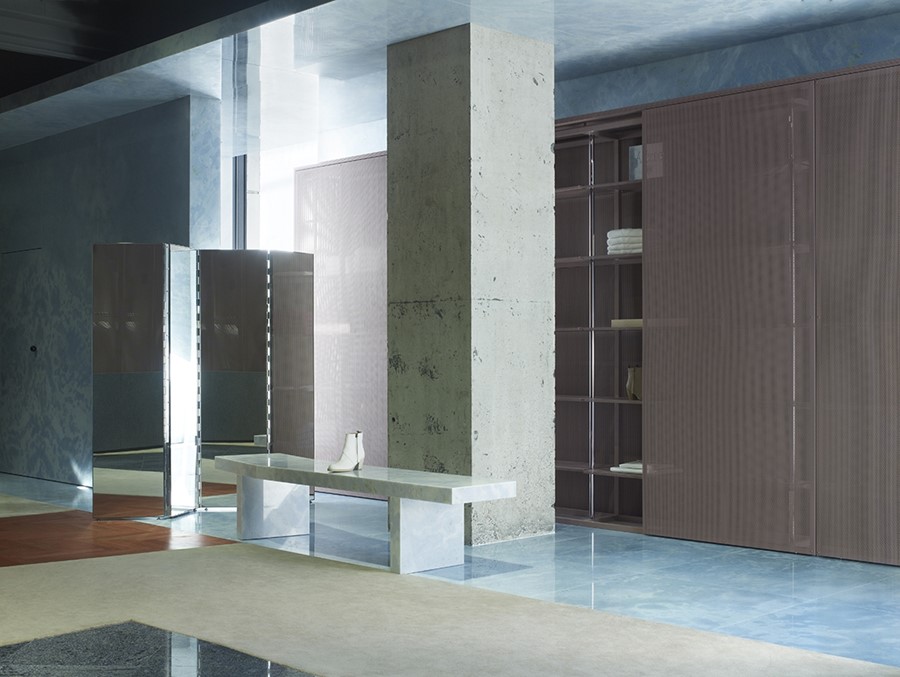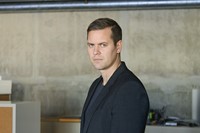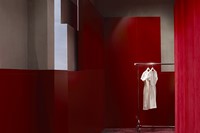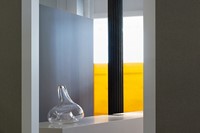Few contemporary fashion brands have taken Andy Warhol’s multidisciplinary approach to the arts and applied it as successfully as the Swedish design collective, Acne. Co-founded by Jonny Johansson as a design, film and advertising agency...
Few contemporary fashion brands have taken Andy Warhol’s multidisciplinary approach to the arts and applied it as successfully as the Swedish design collective, Acne. Co-founded by Jonny Johansson in 1996 as a design, film and advertising agency, the lifestyle label has quietly expanded its empire beyond its effortlessly cool clothing line to include a critically acclaimed biannual magazine, Acne Paper and even toys and limited edition furniture. Staying true to its ethos (its name an acronym for Ambition to Create Novel Expression), even as it increases its global footprint, no two Acne stores are the same, thanks to Johansson’s collaboration with architect Andreas Fornell. While the London store is the picture of Mayfair elegance (complete with giant sculpture by Helmut Lang and a roof garden), the Paris outpost in the Marais gleams with LED tracks. Fornell elaborates, “It´s more fun to make something new. The idea was to reflect the local environment and to give the customer a unique experience in every city.”
Fornell trained as a cabinet-maker but joined Acne as in-house architect after helping to renovate the Acne headquarters in 2005, bringing him back to his childhood dreams of becoming a fashion designer. He nods, “In my youth I’d choose a Helmut Lang coat over food! But I still love fashion as an art form. It is so capricious, inventive and super creative. Nowadays, women’s fashion is still one of my major inspirations for most of our projects. I don't read design or interior magazines but I love to browse through the latest issues of the fashion ones.” But while fashion and architecture intersect, its differences are notable too – “The process of architecture is so much slower which sometimes can be very frustrating. But we want to build things that last, that are not about trends the way fashion is. For me, it´s all about the layout. If I can sense that the creator has worked hard to serve me an exceptional experience, I’m sold.”
"I love fashion as an art form. It is so capricious, inventive and super creative."
Take Acne’s newest flagship in Tokyo’s Aoyoma District – the first steps in their Asian invasion. Says Fornell of the location, formerly the site of the old 10 Corso Como, “I really liked the raw, industrial space. The down side was that that the communication of the store was really visible. So that was the first thing I wanted to change in order to achieve a more complex route through the space.” Johansson’s brief to Fornell was to recreate the spirit of a modern Stockholm house in the East with a subtle collage of luxurious materials and textures used in a relaxed, playful way – patchwork flooring of marble, oak and wool carpet alongside perforated metal screens, concrete walls and a pastel interior palette of Acne’s signature pale pink, grays and a sky blue granite emulating the Swedish summer light. “I wanted to create the same scattered spaces but aspired to achieve a transparency using perforated walls. Our thought there was to achieve a sort of honesty, an almost but not quite total openness.”
And while Fornell looks forward to his next challenge from Johansson, he recently formed his own architecture firm Bozarth Fornell in 2010 which has projects lined up with brands like Sandro and Repossi, and he hopes one day, Raf Simons. For now though, Fornell’s finely calibrated balance of fashion and nonchalance suits Acne down to a tee.
Text by Kin Woo



